Leading pulmonologist Dr Sujeet Rajan shares his experiences of a 12-day Kailash Yatra
At the end of 2019 after finishing an advanced course in yoga and meditation (Shoonya Intensive) at the Isha Ashram in Coimbatore, I decided I must travel to Kailash with Isha.
Sadhguru said: If you can really be with Kailash even for a few moments, life will never again be the same for you. It is a phenomenon beyond all human imagination
I decided I had to go. After an extensive medical evaluation and clearance in February 2020, the Yatra was cancelled that year due to the Covid pandemic. The next year, Chinese Tibetan visas became a challenge (with the India-China stand-off on the LAC), and the Yatra was again cancelled, much to my disappointment. Five days before Sadhguru ventured on a single pilgrimage with a group that year (2021), I was asked to be the medical volunteer for that group. I couldn’t believe my luck but the notice was just too short for me – there was just too much happening in the hospital and clinic with Covid, post-Covid, vaccinations etc. So, I had to let that opportunity pass (I still regret that).
Finally, the Kailash yatra happened this year, from a new route that Sadhguru had carved out in Nepal – a route that was never really taken before. I was game and did another round of medicals in March this year. This included extensive blood work, ECGs, stress tests, chest x-rays and lung function tests. Isha doesn’t leave any stone unturned here – your fitness is paramount before making this trip.
Day 1
On a warm Sunday morning by Mumbai standards, I landed into a more pleasant climate at Kathmandu on the afternoon of August 24, a day before beginning a pilgrimage to Kailash. Given the importance of acclimatisation, I thought it prudent to get in a day earlier at 4500 feet from our sea level in Mumbai – I would be touching 16400 feet in less than a week. Acetazolamide (Diamox) 125 mg twice daily began from one day prior to departure – strict instructions from the Isha Medical team. The intensive medicals that all of us were put through were a lesson in high-altitude travel – play safe rather than be sorry – this was not Isha Travels and Tours (that doesn’t exist) – this was Isha’s Kailash Yatra – a pilgrimage in the true sense. This pilgrimage has been happening for the past 12000 years, and not with the type of hiking shoes and down-jackets we have for sure! This pilgrimage is not about any religion. Religion and prayers became fashionable in India only about 700 to 800 years ago – Sadhguru does believe that many of our problems have arisen because of religion – he says go to Kailash simply as a human. Food enters our bodies and gets digested and ‘becomes us’ because we are essentially humans, and not because we belong to any particular religion.
The Radisson Hotel has always been geared for Sadhguru’s groups
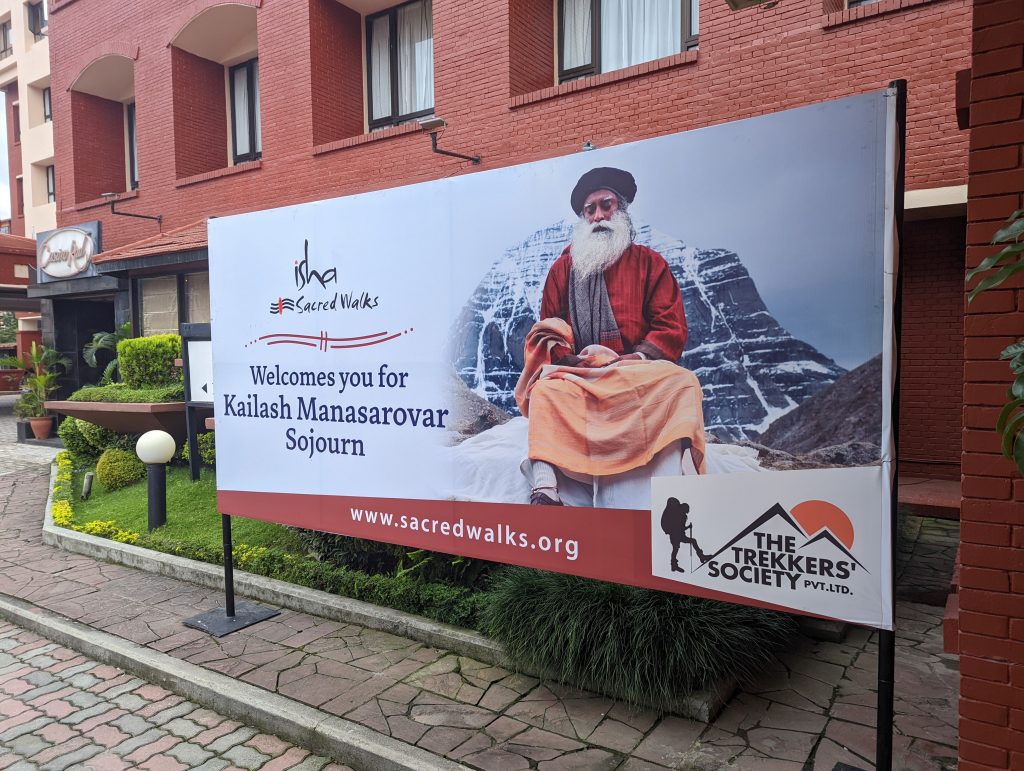
On Thursday, August 25 evening, we were all given name tags, our complimentary duffel bags and backpacks, and a down-jacket on a returnable basis. I must say that though I took the returnable down-jacket (which remained largely packed away in my duffel bag), I wore my Columbia down-jacket (lent to me by my younger brother who had done Tromso in it) – he mentioned it could weather minus 20 degrees Celsius easily and would adapt to external temperature – it was extremely light and would strongly recommend this jacket to future pilgrims though a bit expensive – weight matters when you travel like this, and immensely. The entire group then got to know each other better in the evening and our team leader Amit Anna (everyone in Isha groups calls each other Anna or Akka based on gender) set the ball rolling. He mentioned he would now take charge and we would need to listen and follow instructions from hereon – an outstanding Satsang followed by tying of an Abhaya Sutra to everyone’s forearm – to ward off evils and help fulfill ambitions on this pilgrimage. There was a sense of excitement that evening as we had an early dinner and proceeded to bed early.
Sadhguru told us that you don’t go to Kailash as a doctor, entrepreneur, engineer, banker, teacher etc. You go after dissolving yourself completely. Making a living is not difficult – any human can do it – but making a life is what this life of ours is all about. On my deathbed, I want to feel that this life was worthwhile in every respect. So, live your life thinking if every day was truly worthwhile.
Day 2
The next day we were up at 3.30 am, ready for a guru pooja at 4.30 am, and left for the airport to take an ATR aircraft flight to Nepalganj. I always felt the ATR aircraft was just too small to travel in – after travelling onwards from Nepalganj, I felt the ATR was close to an A 380 in comfort
Once you reach Nepalganj your aircrafts are no longer the ‘luxurious’ ATRs – 15 – 18 seater aircrafts now. Yeti, Sita, and Tara Air operate most flights. Usually chartered, rarely scheduled. Not pressurized, fly up to 13000 feet altitude, and what I had earlier seen only in the movies, never believing I would ever get into one. And here I was in one!
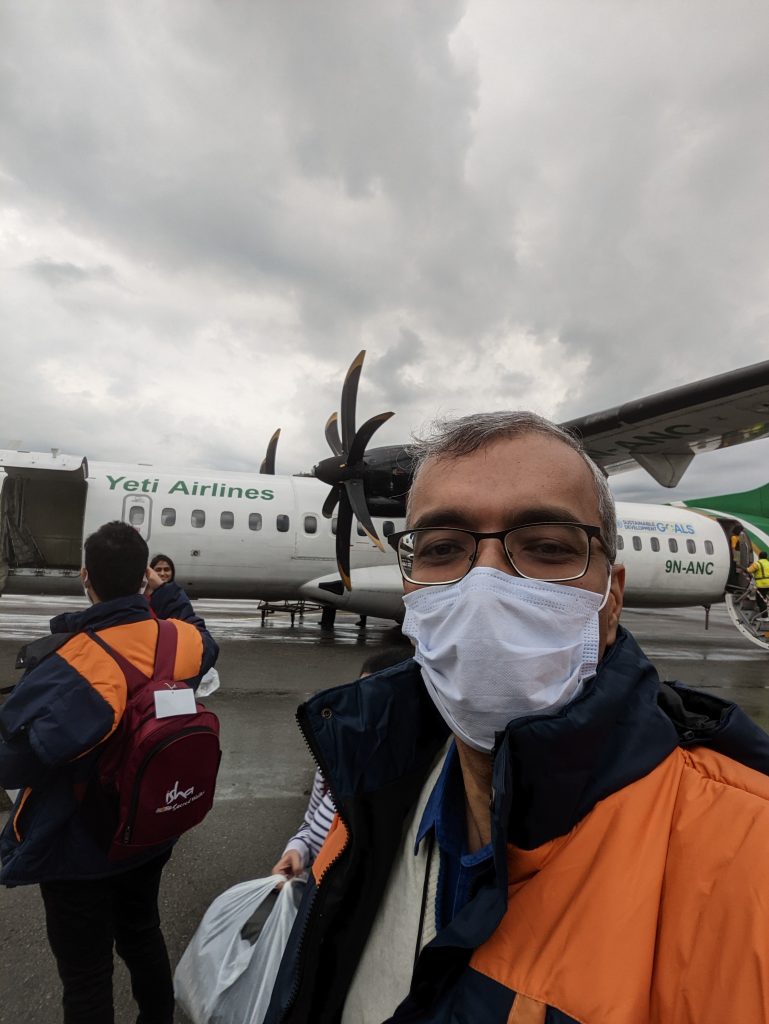
A single air hostess at the back, one flight attendant/technician in front, and 2 outstanding pilots, I’m sure. A thumbs up sign from the pilot to the air hostess is all that’s required for take-off, and we were revving up on the runway to take off. The experience is surreal.
Simikot airport is one of the most dangerous airports in Nepal – situated between mountains and a valley, it is a breathtakingly beautiful airstrip just over 500 meters long. The airport lies about 9000 feet above sea level. Road access to Simikot is very poor, and though the distance is just over 200 km from Nepalganj, air travel is the most frequent mode of transport for travelers and pilgrims to Kailash.
Simikot: On Aug 26, we arrived in Simikot. It was just so serene and beautiful. It was almost like we arrived in a place where we felt there couldn’t have been more beauty – with a mixture of mountains, a valley, and a small airstrip, and a quaint little hotel, nested in the hill. 4 people to a room, sharing a bathroom, but that hardly mattered.

After lunch, we left for a walk across poorly paved roads, largely made up of broken stone. The elderly would need a walking stick to not trip, and hiking shoes were safest to use, lest anyone twists their ankle on bad roads. Nepal’s roads (especially the interiors of the country) could do with a lot of improvement. Nepalese children watched us from rooftops as we trudged along.
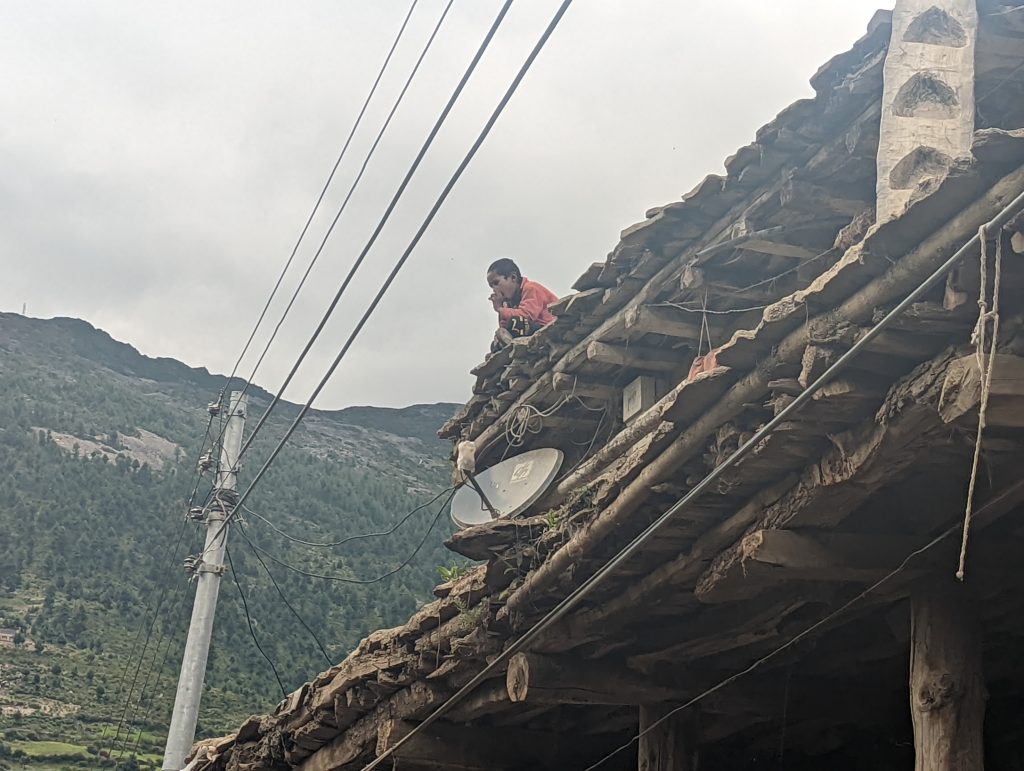
In the evening we were told that we had three options the next day: 1) a helicopter ride to Hepka (next stop at 12,000 feet approximately), or 2) a jeep ride to a certain point followed by a short trek of about 6 km downhill, or 3) a full trek of almost 14 km for those willing to do so. I opted for Option #A3 though I am now 55, the adventure spirit in me fueled this decision – many colleagues coaxed me not to walk ; in hindsight this was likely sincere advice due to my biological age, but I walk at least 5 km/day anyways, so I didn’t consider this a big challenge. Swami (one of Sadhguru’s brahmacharis) told us that the walk would be about 5 km uphill, then about 3 to 4 km on a straight and the last 6 to 7 km would be downhill. This was going to be a challenge, I realized, but I wanted to take it.
Day 3
Many people looked at me and said, “Get into the jeep, doc… your toes will hurt walking 14 km”. But I said, “No, I want to walk”.
And a group of us (largely youngsters) started walking. Let me tell you when you’re walking from 9,000 feet altitude to 12,000 feet uphill, you huff and puff and could get a bit out of breath. So do it slowly. Walking on the straight after that is not challenging. But the biggest challenge is the downhill. And as a doctor, I should have known this. The strain on the femoropatellar ligament and the knees is just tremendous. A dear friend had loaned a walking stick to me – considering her age at 65, she opted for the helicopter ride. I was adamant not to use it for most of the walk but on the downhill I was compelled to use it for a stretch. Downhill walking at high altitude is tough. And you have to have both physical and mental grit to do it in hot weather. We had a few snacks with us and we walked slowly with our team leaders keeping up both the front and the back. And finally, by around 2 pm (a five- to six-hour walk) we reached a small little home near the bridge over the river where we sat and had a few biscuits and tea served by the lady of the house. Chicken Maggi noodles were also offered but non-vegetarian food was not something we wanted to do on this pilgrimage. Our guiding sherpas happily devoured that!
Finally, the jeeps came down gradually on a road at the other end of the bridge. We walked across the bridge in groups of six to seven, got into the jeeps to take the final upward journey to 12,000 feet. It was a memorable day, toes paining a bit, but when you finally arrive at the campsite, no words or pictures can describe that feeling.
Hepka is the first camp that we go to situated in a small valley surrounded by mountains. There is significant cloud cover most of the day and therefore access for helicopters is becoming an increasing challenge, especially since so many groups are doing this pilgrimage, and literally back-to-back. 21 groups did this pilgrimage with Isha with approximately 60 pilgrims each – 12 groups were entirely foreigners, and 8 groups of Indians. The walks in Hepka were outstanding, and one was particularly beautiful where you walked up a hill and then walked down the hill to an area with a small water body.

This area was silent and looked pristine as the clouds descended on it. After meditating here for about half an hour, I thought I had lost my group – the cloud cover was so thick, I couldn’t even see the rest of the group clearly. I felt like I was transported out of this universe. We slowly trudged back (almost in a trance) to our camp.
Day 4
Camping is interesting at 12,000 feet and above. The tents are equipped with two sleeping bags and shared by 2 people. 3 tents share one bathroom. The bathroom looks like this
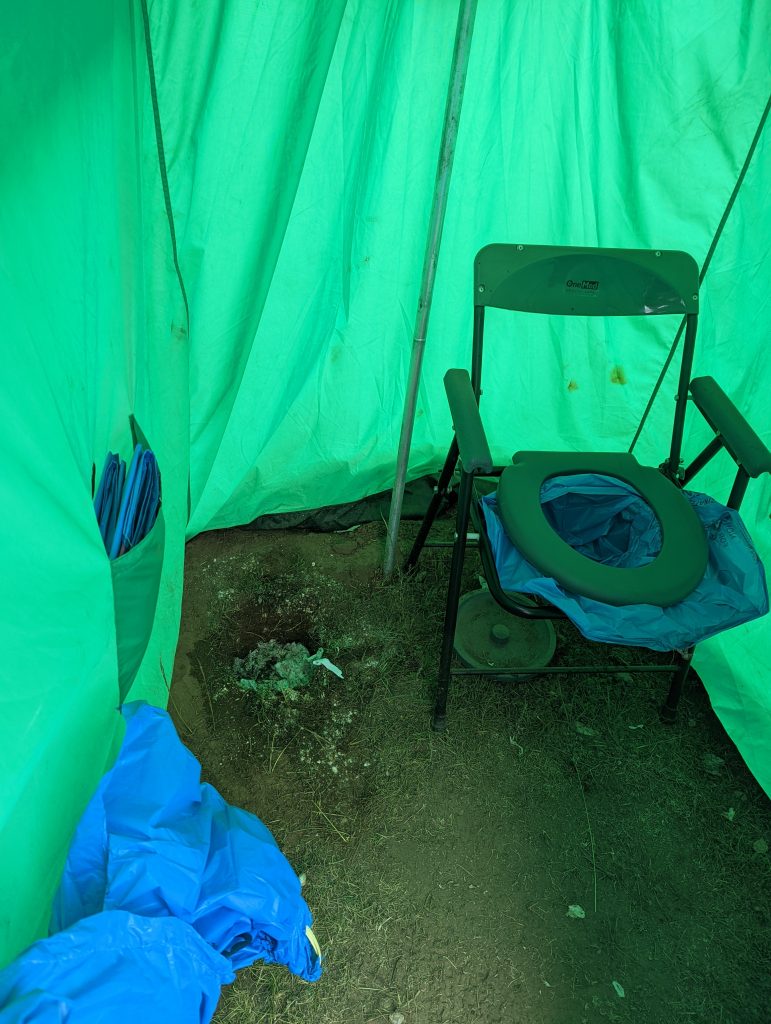
And it’s extremely bio-friendly – a little string within a plastic cover needs to be pulled after you do your business and that is then disposed of in a larger plastic bag. The toilet tents are cleared and cleaned by the local staff periodically, and the waste is actually transported back to Kathmandu. Toilet paper is available in the toilet tent, and wet wipes and hand sanitizers help you finish your job. A small pit hole in the corner allows minor business to be done without wasting plastic.
The Ingenuity of this camp and its washroom facility is just amazing. Though we couldn’t really take a bath for almost 7 days in a row (Hepka and Dakchi included), we could largely manage with a periodic change of clothes and the use of body wipes – which I strongly recommend should be carried.
Food: The food that was served was cooked by the local Sherpas and was delicious and high in carbohydrate content.
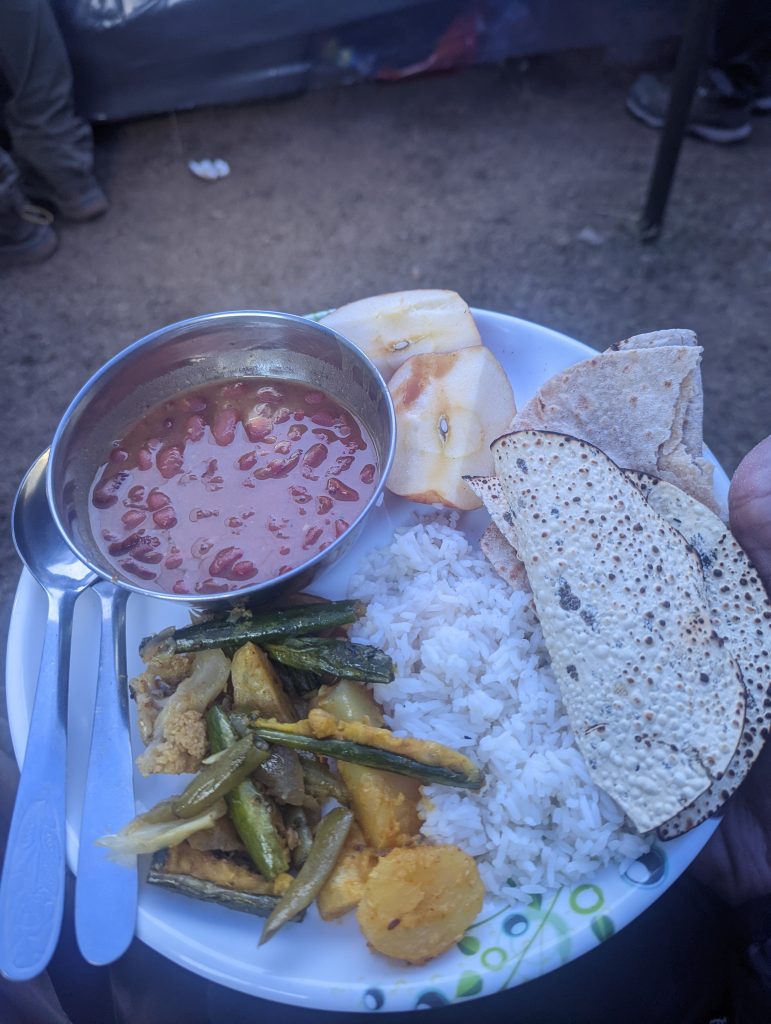
You cannot afford to eat a low-carbohydrate, high-protein diet at high-altitude! At high altitude your energy consumption is much higher and sufficient carbs are required, regardless of whether you are diabetic or not.
Medical checks would be done at least twice a day – I supported (as much as I could) our lead doctor Smita Kale assigned to our group, in taking a checklist of symptoms of acute mountain sickness (AMS), checking oxygen saturations and blood pressures of all group members twice daily.
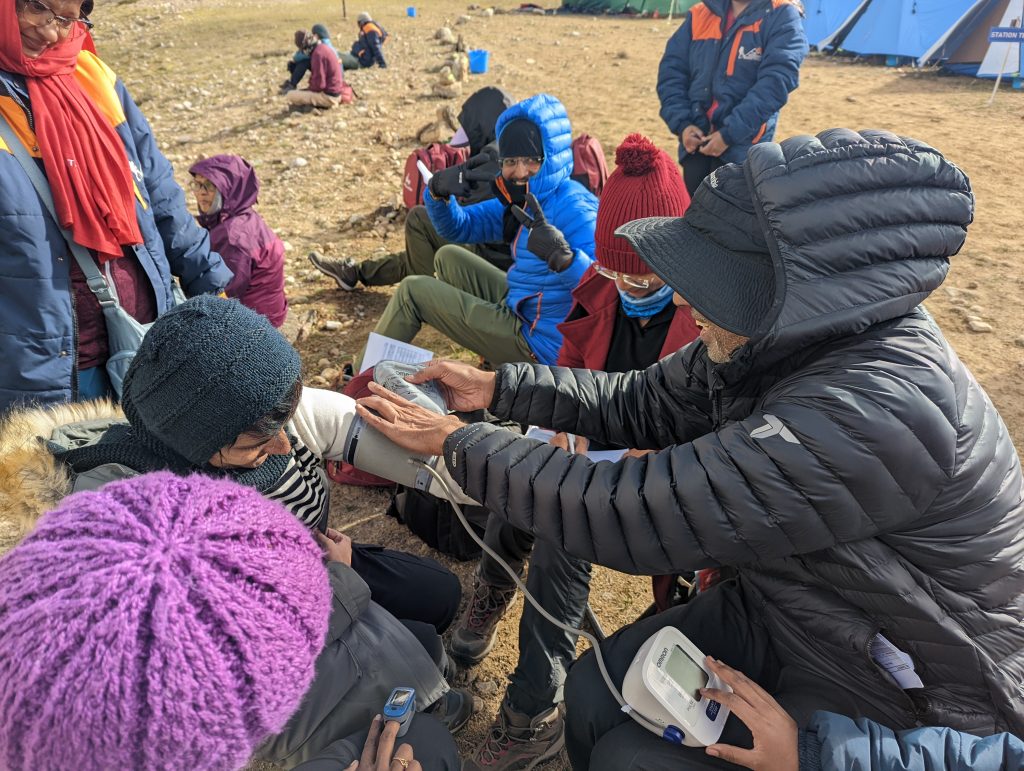
Everyone was strictly advised to continue their Diamox since we had reached a higher altitude now. Smita was strict and that’s important on such a pilgrimage. Having advised many patients before they ascend to high altitude on leisure and pilgrimages, I was now experiencing first-hand, and learning on the go. In a few patients who were borderline hypertensive at their original locations near sea level, we noticed that their blood pressures did cross threshold levels to need antihypertensive medication during the trip. Just one on the team had AMS, and severe enough to require steroids – she did well and continued the pilgrimage on steroids. Isha is very strict on the medical, and any member of the group who shows signs of bad AMS is usually observed very carefully, and not allowed to proceed higher up until they are significantly better and on appropriate medication.
Day 5
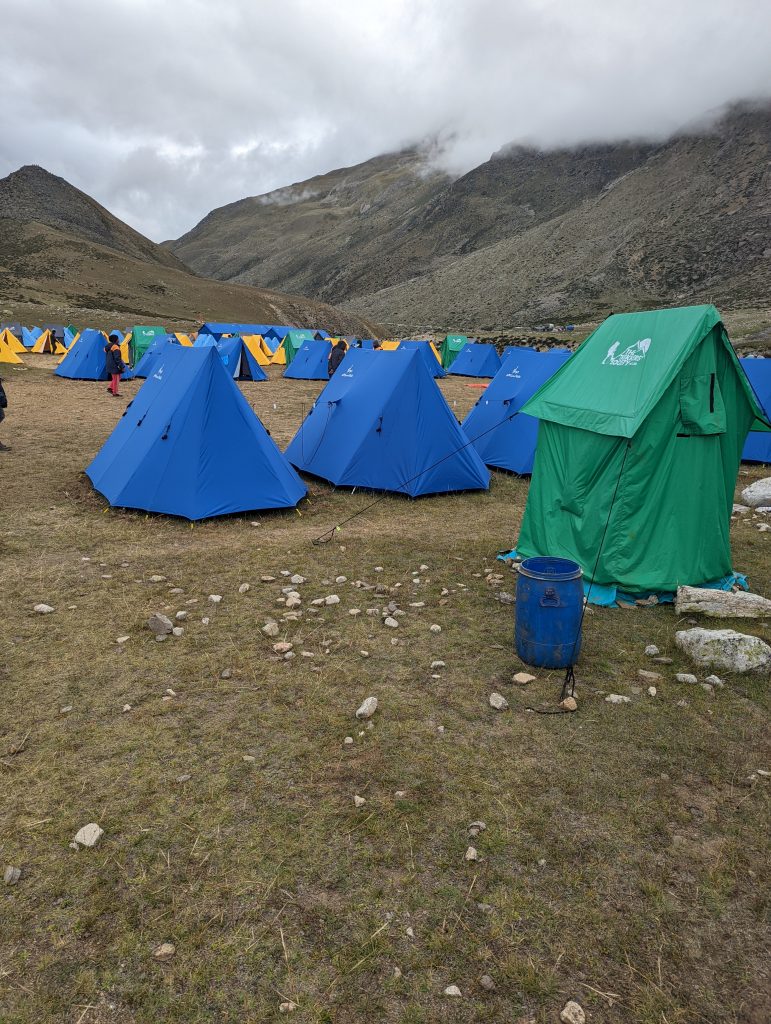
We waited a whole day on Aug 29 for a helicopter. Heavy cloud cover ensured there was no chance of getting one. It’s quite an experience to get up at 4.45 am, get ready for the day, be at a guru pooja by 6 am, then have breakfast at 7 a.m. and then just wait – and wait the whole day for a helicopter! I never looked for so long at the skies before in my life, hoping for a machine made of steel to appear out of the clouds and take me to the next destination in my pilgrimage.
Day 6
Finally, on Aug 30, the clouds started clearing in Hepka and the helicopters started arriving to a large cheer from our group, and the group ahead of us, many of whom had not yet moved to their next destination either – Dakchi. The helicopters were coming from Simikot to pick us up in groups of five from Hepka and take us to Dakchi. Interestingly, when we finished our pilgrimage, we were informed that Hepka was taken off the itinerary for future batches because of its persistent cloud covers and inability of helicopters to land safely.
Dakchi is now at 14,000 feet, so it’s a significant elevation beyond the 12,000 feet we were at at Hepka. Dakchi is also nestled in between mountains. Since we were delayed by a day into Dakchi, our Kailash sighting on Aug 31 was also delayed by a day and pushed to Sep 1. Dakchi is a much larger campsite.
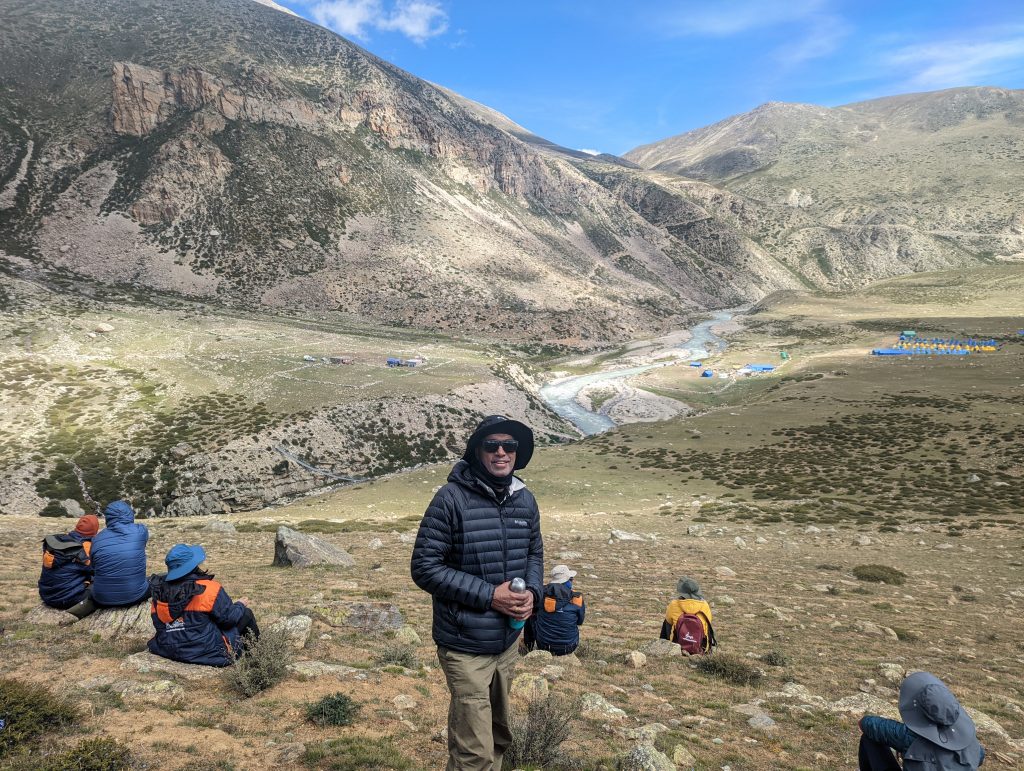
Some beautiful scenic walks included the majestic Mount Jumla (pronounced Jamula by the locals) which is located in the Karnali province of Nepal, snowcapped, pristine in appearance, and considered very holy by the local Nepalese
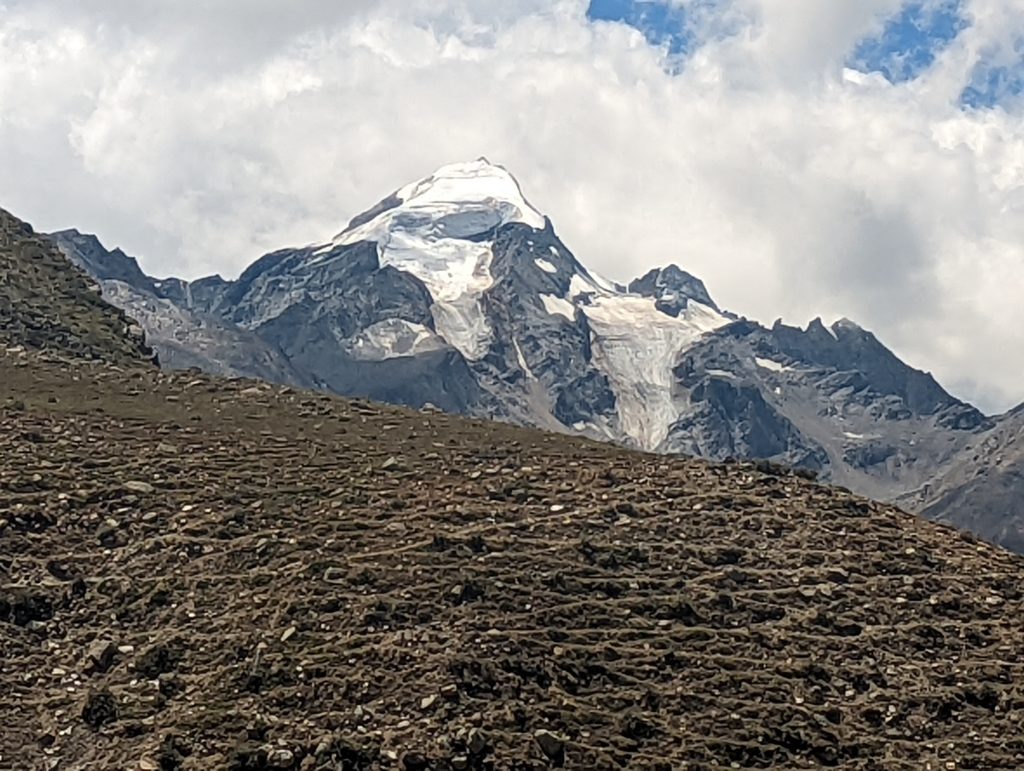
About 100 gas cylinders are available at any given point of time in Dakchi
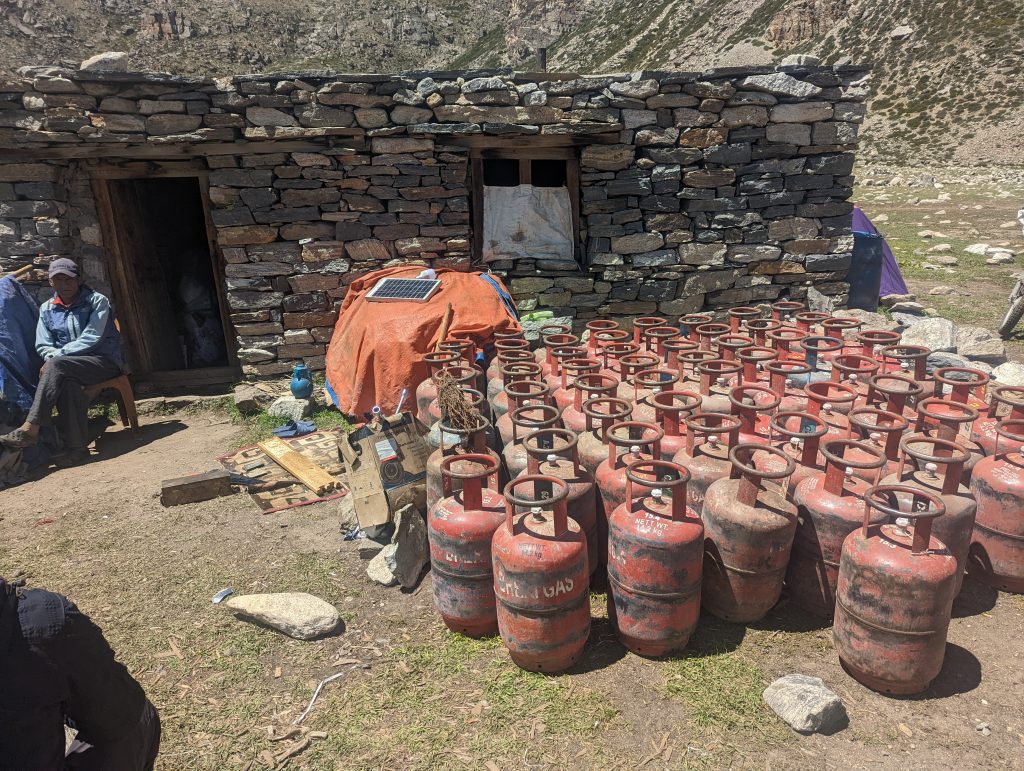
These are transported by air to Simikot, and from there in a tractor across rugged roads. A tractor can take about 30 – 50 cylinders at a time. There are over 100 occupants at the camp in Dakchi at any given point of time, and at least 4 to 5 cylinders of gas are required per day to keep this camp functional. It is just amazing how these cylinders are brought up here to 14,000 feet to keep this campsite going. The organisational logistics for this pilgrimage that Isha has pulled off speak volumes.
Day 7
Lapcha – Clearly on the Sep 1 morning, there was a palpable sense of excitement amongst the group as we prepared for the final leg of the pilgrimage – Dakchi to Lapcha. Medicals on the Aug 31 evening were more intensive. We would have to be awake by 3.30 am, ready by 4.15 am for a guru pooj, and have breakfast by 5 am before proceeding to the jeeps and (can you believe it) tractors to take us to Lapcha.
The Limi river
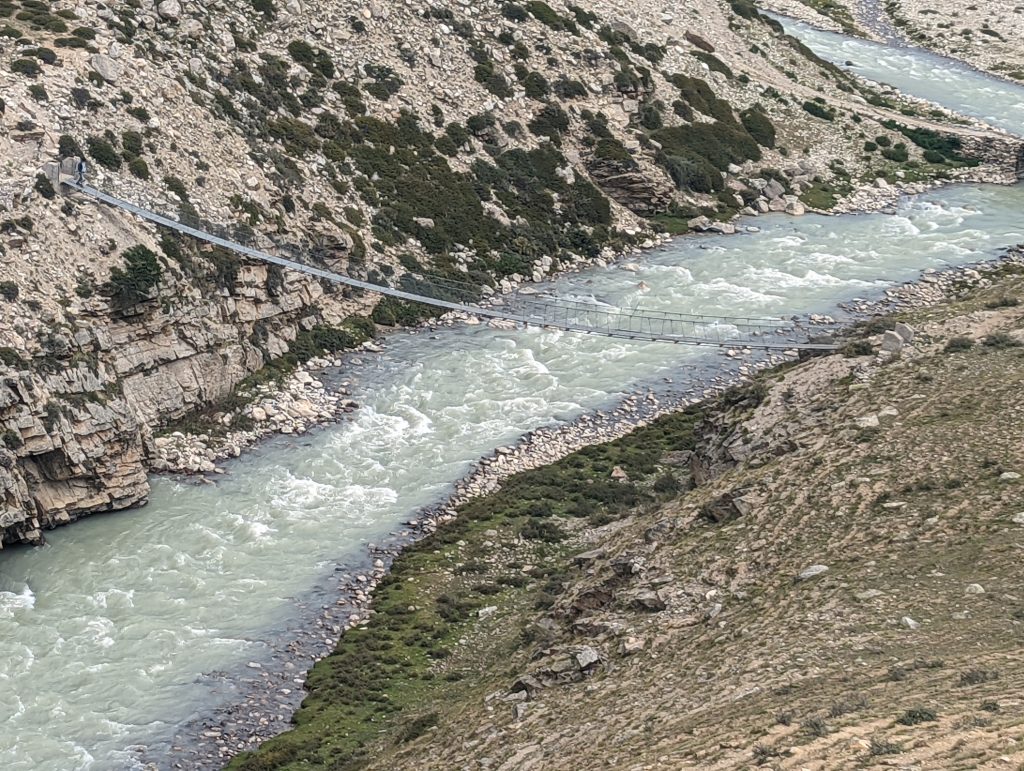
flows from Tibetan mountains into Dakchi, and then down south into Nepalganj near the border of Nepal and India. There are a couple of policemen here or keep a watch on three villages, each about two hours walk from each other! The army is stationed at Hilsa on the Nepal-Tibetan border, and is conspicuous by its absence in this part of Nepal. After walking across a suspension bridge across the river Limi we got into our assigned jeeps and tractors. For our group we had five jeeps and two tractors. The hardiest amongst us could sit at the back of a tractor trolley and the less hardy were allowed to sit in jeeps. The jeeps in themselves were amazing – disassembled in Kathmandu or Simikot, they were transported by small aircraft and helicopters to Dakchi, from where they were reassembled to make the onward journey to Lapcha – unbelievable but true – there was no other way to get to Lapcha besides walking – the roads have to be seen to be believed – if you complain about Mumbai’s roads, welcome to Dakchi – you would be happy to have some ‘road’. The roads are just about roads. Someone said they had been created just for us to go and visit Lapcha, and never existed before.
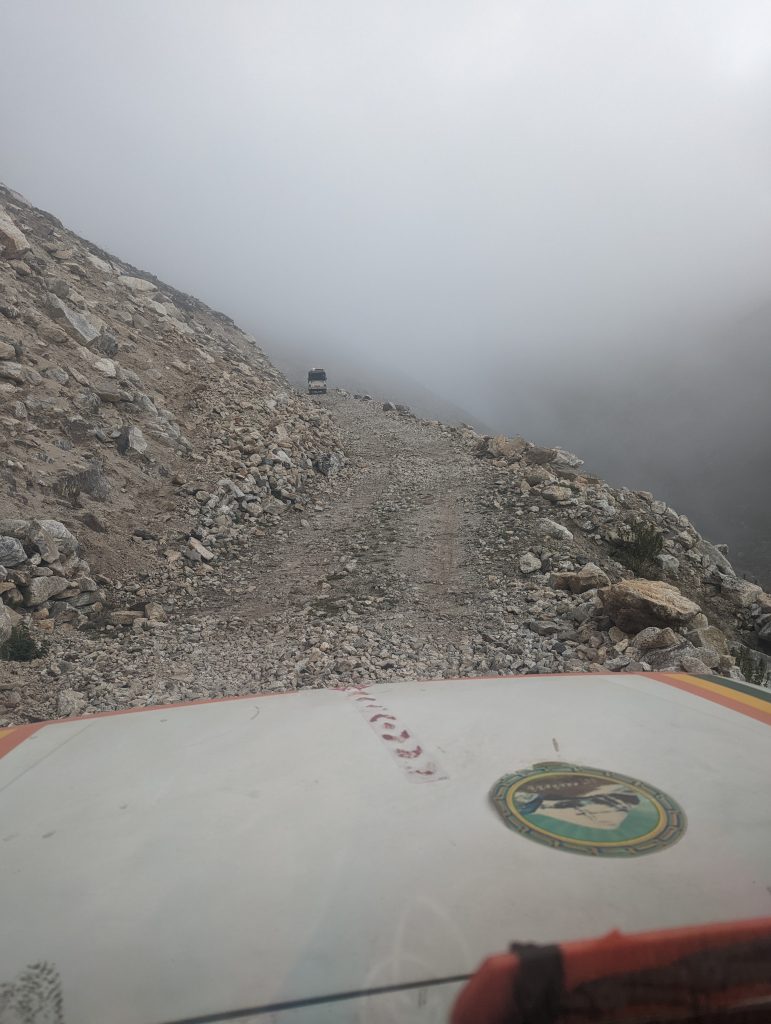
Incredible driving by our driver Yonguk for about two hours (with 2 breaks for 10 minutes to walk a bit and acclimatize) kept us on the edge, but alive
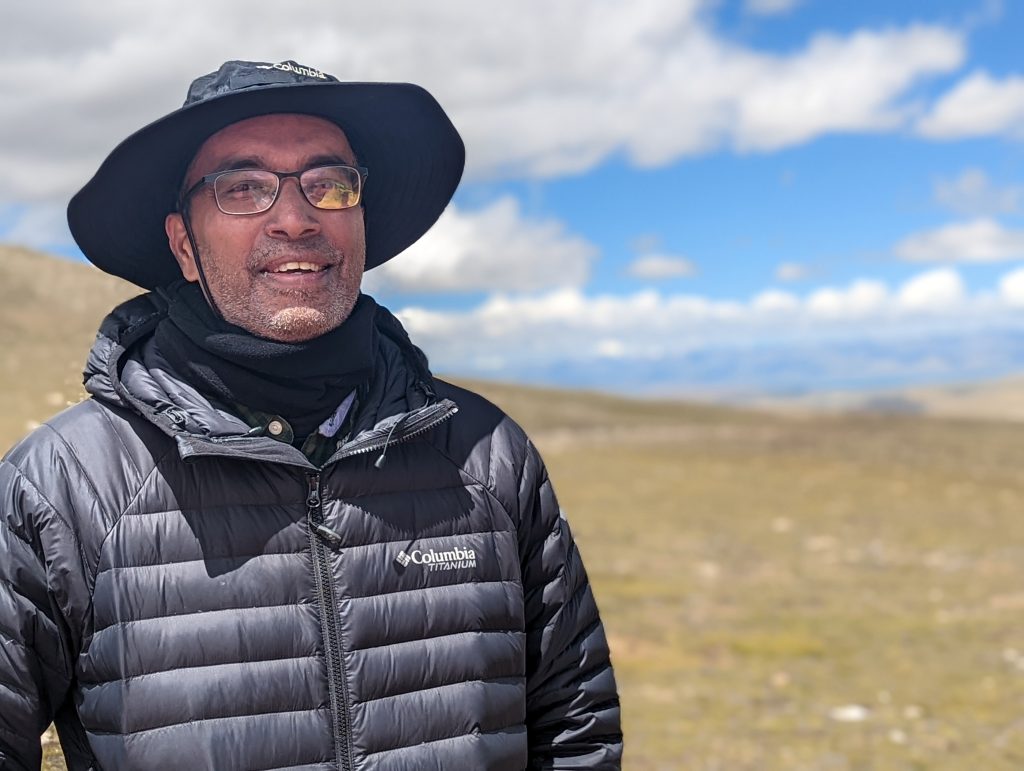
He got us safely through hairpin bends, water bodies, and almost ‘no roads’ into Lapcha in just over two hours. .
We had breathtaking views of Limi valley below as we slowly ascended. It was a mesmerising drive.

Lapcha/Kailash Sighting: As our jeep reached the top, there was a strange sense of energy that engulfed me – almost like I was being given a huge boost to get on – I couldn’t make out where it was coming from, but it was all-encompassing. Despite the 16,400 feet altitude we were at, it didn’t seem to affect me at all, and very few of our group had any symptoms at all – there was an eerie silence as we reached to sight Lake Manasarovar in the distance in Chinese Tibet, beyond which towered the mighty Kailash, partly covered by clouds. You didn’t need to see this mountain to feel its presence – you just had to be there, and the moment was everything. Suddenly, there was nothing I had, and at the same time I felt I had everything – it was just indescribable. No photograph (though we did take some), or video can describe what you experience there – you have to experience it.
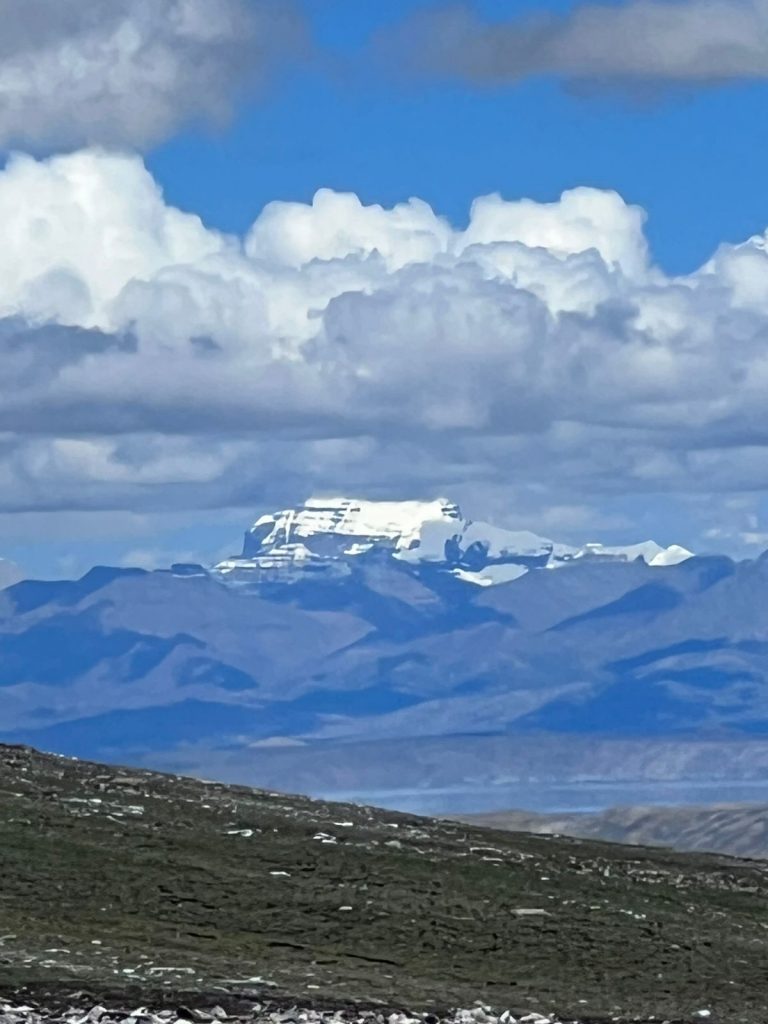
Sadhguru, though not physically with us, seemed to be there with us nevertheless – I recollected the story on Adiyogi when the seven saptarishis asked him what they should do if they fell into trouble while traveling across the world to impart the knowledge they had learnt from him – he just said, “I will sleep” – what he meant was that he would always be there, all encompassing. You can’t pray to Kailash, you don’t ask for anything, you just be with Kailash – and that is all it takes. We had an initiation pooja while at Lapcha in the presence of Kailash.
I was in a bit of trance on the way back – if you can take a little bit of Kailash away with you, I think you are transformed significantly. It’s an overwhelming experience. Though mountains have always fascinated me since childhood, this was a different mountain – it’s almost as if it spoke and poured out knowledge in front of you. Just being with it was all that was needed, even if it was for a little over an hour.
Day 8 and Day 9
Though I spent the next two nights at Dakchi (without helicopters to get us back to Simikot), there was a different energy that stayed with me those nights – it didn’t matter whether I was stuck here or anywhere for that matter – I had experienced something much larger than life – I suddenly felt how small and insignificant I was, and how the vast knowledge of this universe was manifesting if I chose to access it. That is Kailash in its true perspective, I believe, and what I experienced. There is no need to differentiate between what is sacred and not sacred, and no need to pray. The Creator is far larger than all this nonsense – and He certainly isn’t going to take instructions from you! We haven’t even understood what the atom is all about, and we are going to give instructions and requests to him? Just be with him, wherever you are.
Day 10 and Day 11
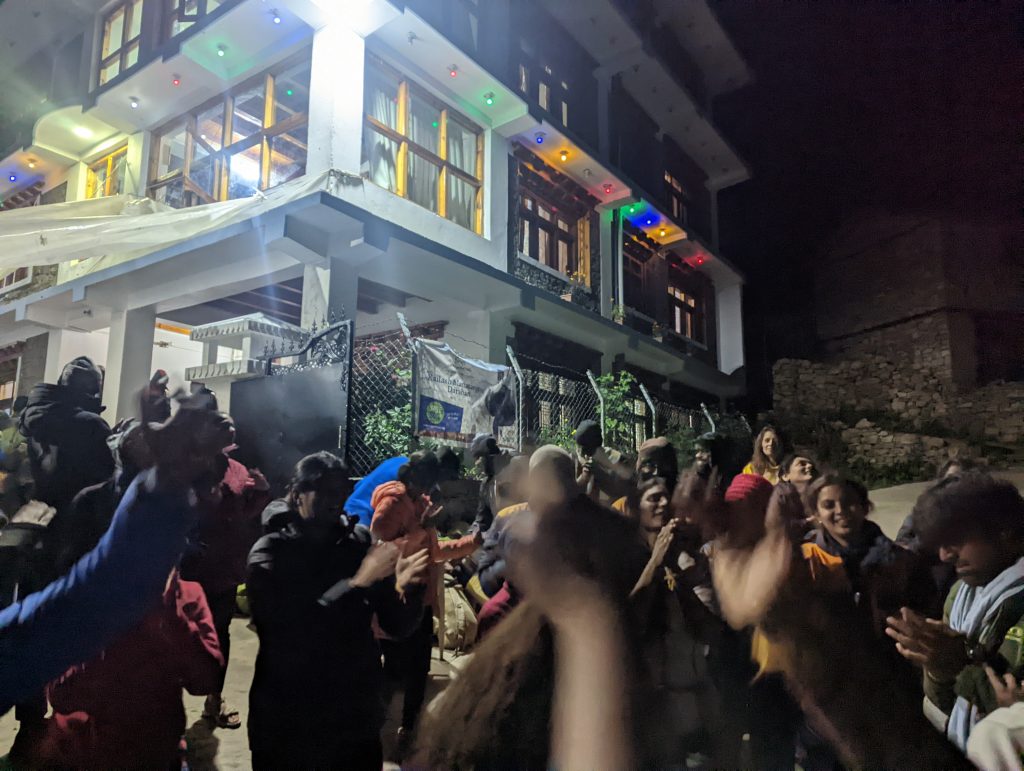
On Sep 3, we got a helicopter back to Simikot, danced wildly and joyfully to Isha songs (without any alcohol), and the next day a flight on to Nepalganj, and the same afternoon an ATR back to Kathmandu. Mobile phones started to buzz again – it didn’t feel great to be honest, but happy to be able to connect with family and friends again. There is something about a prolonged silence that makes your mind more receptive to things not physical. You have to leave everything you have behind, your family, your possessions, and all the nonsense in your brain – to receive at Kailash. That is the way Sadhguru said to go, and that is the only way you can receive something, even if it’s a fraction of that great mountain’s knowledge.
Day 12
Kathmandu – Mumbai
Some must-carry items:
- Clothing – 6 sets
- Thermal Inner wear (2 sets)
- Wide-brimmed hat
- Waterproof jacket with hood (very important), and trekking shoes with a good tread/grip
- A pair of gloves
- 3 – 4 pairs of woolen socks
- Sports sandals
- Thermos
- Toiletries
- Quick-dry towel
- Sunglasses
- Powerful flashlight, and headlamp with extra batteries
- Lip balm
- Sunscreen lotion (50 SPF or more)
- Castor oil to lubricate nostrils at high altitude
- Toilet paper/wet wipes/ hand sanitizer
- Snacks
- Medical kit



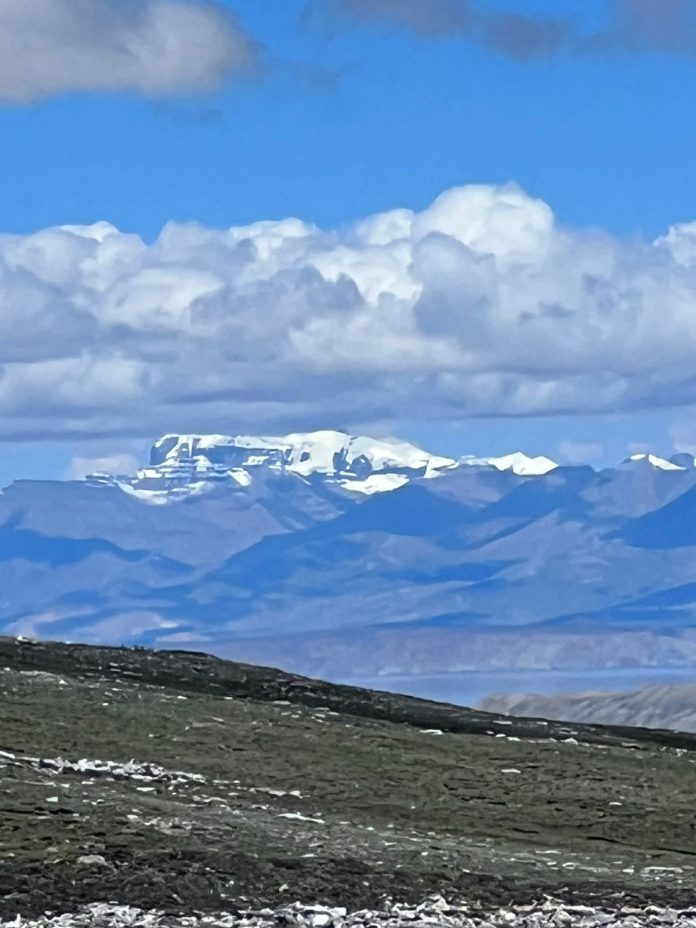
Thanks for your narration of mount Kailash it’s refreshing my visit 15 years back to mount Kailash. I traveled solo from Mumbai.
Comments are closed.